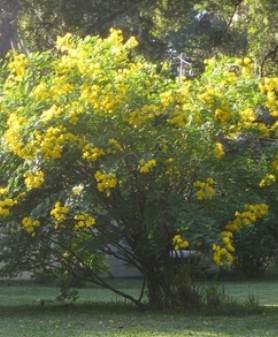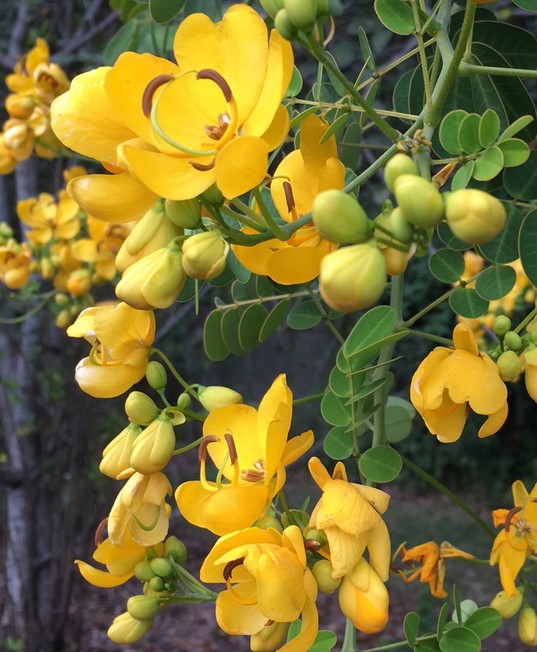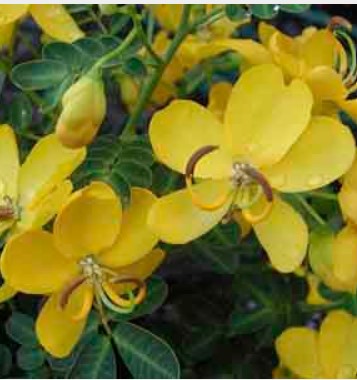Cassia Tree
Senna bicapsularis



Characteristics
- Type: Woody Shrub
- Zone: 8 – 10
- Height: 8 – 12 Feet
- Spread: 8 – 12 Feet
- Blooms: Yellow
- Sun: Full Sun to Partial Sun
- Water: Average
- Soil: Well Drained
- Salt Tolerance: Moderate
- Attracts: Bees, Butterflies
- Sulphur Butterfly Host
- Deer Resistant
Culture
Cassia Tree grows well in most moderate-quality garden soil. Space plants 3 to 4 feet apart from each other and other nearby plants. Cassia also grows well in large pots filled with standard potting soil. Provide cassia with a full six hours or more of daily sunlight. Plants remain evergreen in sunny locations where temperatures remain above freezing. Water garden cassia approximately once a week with 1 to 2 inches of water. Do this for the first year after planting. Established plants only require irrigation during dry periods when the soil begins to dry out completely. Water potted cassia when the top 1 inch of soil feels dry. Cover the soil in the garden bed with a 2-inch layer of mulch and replenish it each fall. Leave a space between the cassia stem and the mulch so they aren’t touching. In the milder portions of its growing range the Winter Cassia may remain semi-evergreen. Where temperatures drop below freezing it is more likely to be deciduous.
Noteworthy Characteristics
Few plants can bring color to the fall garden like the Winter Cassia! Clusters of butterfly-like bright yellow
1″ blooms are borne in October-November on this large arching tree-like shrub or root hardy perennial. The Winter Cassia may freeze to the ground in the northern portions of its range but it is quick to return in spring. A host plant to Sulphur butterflies and nectar source for a variety of pollinators. Sometimes called the Butterfly Bush or Christmas Senna, this durable plant is considered to be somewhat drought tolerant once well-established and is deer resistant.
Problems
Winter Cassia has the potential to reseed and may be considered invasive in some areas. Deadhead to prevent reseeding.
Garden Uses
Cassia makes an easy-care addition to beds, borders and butterfly gardens. Grow cassia in well-drained soil that isn’t prone to standing water. Can be grown in a container.